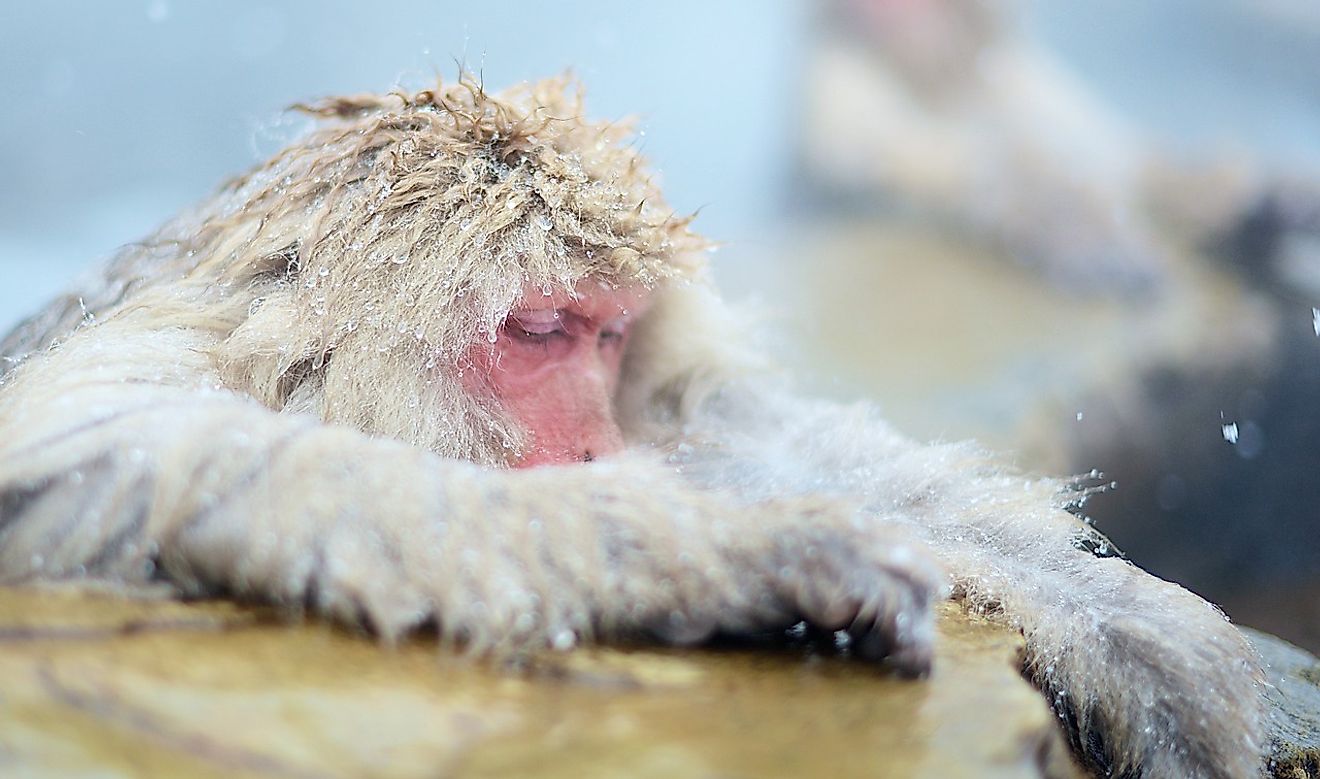Snow Monkey Facts: Animals of Asia

5. Physical Description
An Old World species of monkey native to the northern regions of the island nation of Japan, the Japanese macaque or snow monkey lives in snow-covered regions where no other primates, and few other terrestrial animals, can survive. Adults are identified by their brownish gray fur and short tails, and their reddish bottoms, hands, and faces. Snow monkey females typically weigh 12 pounds while their males can weigh up to 30 pounds. The scientific name of the snow monkey is Macaca fuscata. However, they are more popularly known as saru by the Japanese people.
4. Diet
Being omnivores, the Japanese macaque or snow monkeys feed on numerous kinds of food with more than 200 species of plants being included within their daily diets. Interestingly enough, they can often be seen feasting on soil, insects and tree bark while. On the island of Yakushima where they are known to thrive, mature leaves, fallen seeds, and fruit are devoured readily. They will also feed upon mushrooms and other fungi, mosses, and ferns. During winter, they will survive by eating all manner of insects and other invertebrates until summer when fruits are abundant. In addition to fruit, in warmer months they vary their diets to include nuts, plant roots, and fish. During such times they will devour food enthusiastically in an effort to store as much fat as possible in preparation for the cold winter season to come, when metabolic needs are high and food is scarce.
3. Habitat and Range
The Japanese macaque abounds in three out of Japan’s four largest islands, namely Honshu, Kyushu, and Shikoku. The individuals living in the northernmost regions reside on the Honshu Peninsula of Shimokita, which juts from the northernmost part of the island. Today, there are approximately 114,431 snow monkeys to be found living in the wild. Snow Monkeys are able to thrive in many different kinds of habitats, including the subtropical and subarctic forests of Japan. They have also been sighted in subalpine and warm forests of central Japan, as well as the forests composed primarily of broadleaf evergreens located in their most important habitats in the southwestern regions of Honshu, and those upon Kyushu and Shikoku. Near the town of Dilley, in southern Texas, between 500 and 600 monkeys are being kept within a sanctuary where legal restrictions are currently being imposed against hunting and killing them. The existence of snow monkeys are being threatened in places where natural forests are being replaced by lumber plantations, as well as those areas where farmers decimate their habitats as they make use of slash and burn agriculture. Consequently, the ESA has listed Snow monkeys as being a “Threatened” species in the wild.
2. Behavior
Like many other primates, the Japanese macaque are reportedly very smart, and able to invent new behaviors and pass them on to their troupes through imitation. Like people, they can learn new things about their environment and pass on specific preferences to other monkeys. A case in point was the 1963 observation of a young female snow monkey called Mukubili, who discovered that she liked wading in a hot spring. This consequently influenced other young monkeys to readily join her in the water. Initially, only the young ones followed her example. However, with the passage of time, other, older monkeys were found to have displayed the same liking for hot springs as a remedy to the winter cold. Macaques also engage in social grooming behaviors.
1. Reproduction
Sexual maturity is attained by female snow monkeys at around 3.5 years of age. For males, reproductive maturity is not reached until around a year later, at an age of around 4.5 years. Unlike many other animals, the females are the ones who pick their mating partners, of which they may have many over the course of a single breeding season. Her criteria for picking a partner is often based on a male’s rank within the group, and she typically avoids partnering with a male she’s already mated with in the past 5 years or so. After a successful mating, normally only a single baby is born, who will remain dependent on its mother until venturing out on its own at around two years of age.











